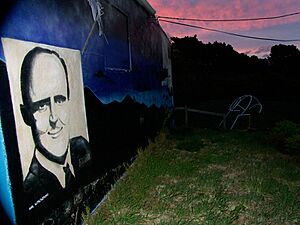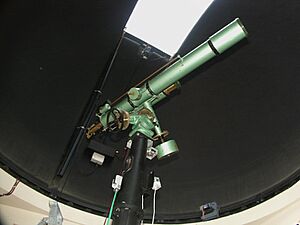Gifford Observatory facts for kids
The Gifford Observatory is a special place in Mount Victoria, Wellington, New Zealand. It's where people go to look at the stars and planets! This observatory is run by the Gifford Observatory Trust. They want to make sure students in Wellington can use it. Many high school students and members of the Wellington Astronomical Society use it often.
Contents
Looking at the Stars: The Gifford Observatory
How the Observatory Started

The Gifford Observatory first opened in 1912. It was created thanks to Charles Gifford, who was a science teacher. He wanted a place for students to learn about space.
The observatory moved to its current spot in 1926. This land is now looked after by Wellington College and Wellington East Girls' College.
A Time of Repair
In the late 1970s, the observatory started to have problems. It wasn't used as much, and things began to break down. It needed a lot of work to get it back in shape.
In 1998, a group of teachers and people who loved looking at the stars (called amateur astronomers) from the Wellington Astronomical Society decided to help. They formed a special group called a "trust." Their goal was to fix up the observatory.
They worked hard, and on March 25, 2002, the observatory was ready again! A very important person named William Pickering helped reopen it. He had used the observatory a lot when he was a student there.
Tools for Stargazing
The Main Telescope
Since 1924, the observatory has had a special telescope. It's a 130 mm Zeiss refracting telescope. A refracting telescope uses lenses to make faraway objects look closer.
At first, the telescope used a clockwork system to move smoothly and follow the stars. But in the mid-1960s, it got an upgrade! A motor was added to help it move, making it even easier to use.
Where the Telescope Was Kept
During the time the observatory was not working well (in the 1980s and 1990s), the telescope was kept safe in storage. Once the observatory was fixed up and ready, the telescope was brought back home. Now, students and astronomers can use it again to explore the night sky.



